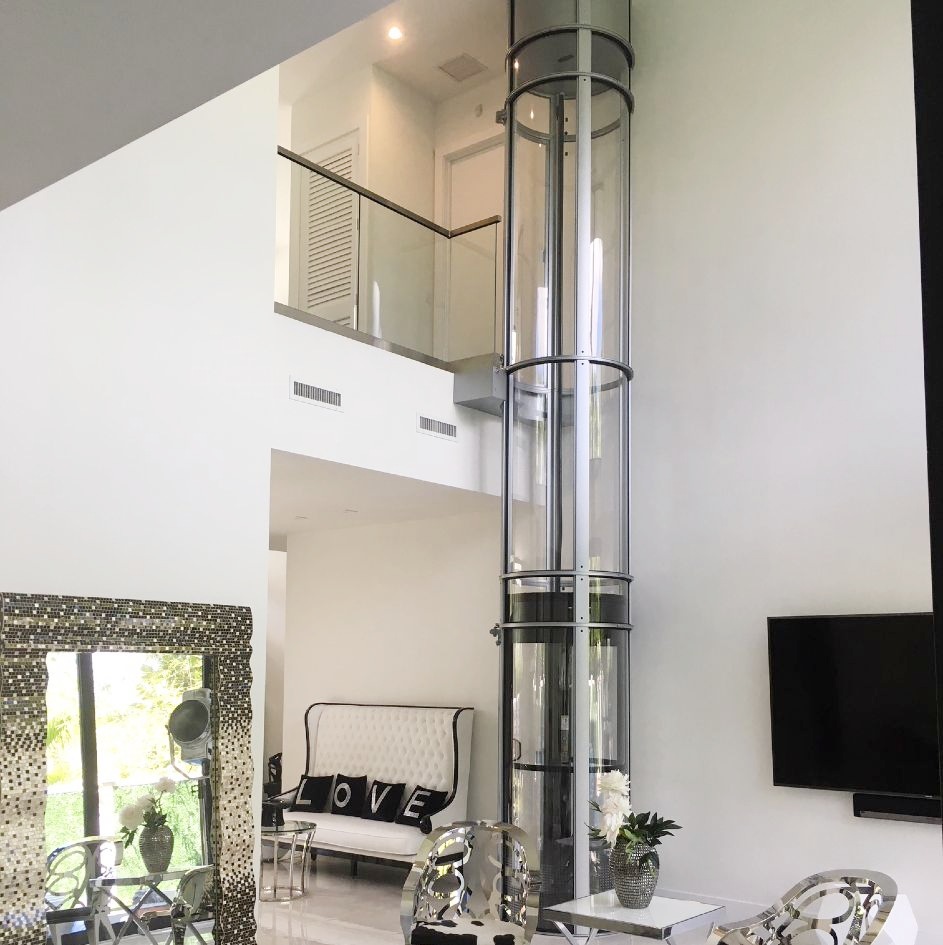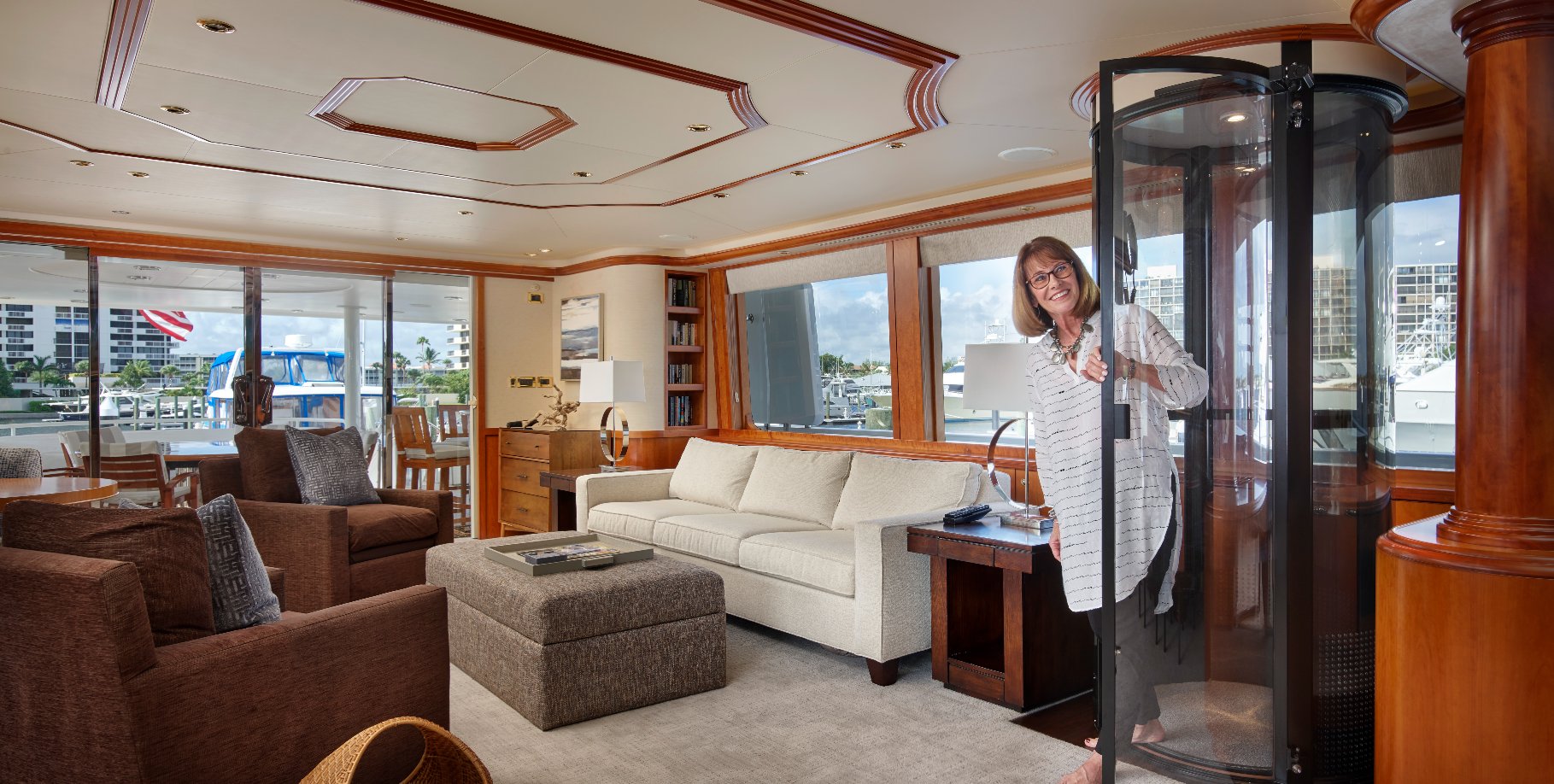Imagine gliding effortlessly between floors in your own personal transparent tube elevator for house. This isn’t science fiction – it’s the reality of tube elevators, also known as pneumatic vacuum elevators. These innovative systems are transforming accessibility and adding a futuristic touch to homes worldwide. But are they right for you?
We’ll answer some of the most critical questions homeowners have. By the end, you’ll decide if a sleek tube elevator for house is the perfect fit for your lifestyle.
How Tube Elevators Work?
Unlike traditional cable-and-counterweight elevators, tube elevators utilize the power of air pressure. Here’s a breakdown of their ingenious operation:
- The Transparent Tube: The heart of the system is a robust, airtight cylinder made of polycarbonate. This transparent tube serves as the vertical shaft, offering panoramic views during your ride.
- The Capsule: A comfortable, climate-controlled capsule acts as your personal chariot. Depending on the model, it can comfortably accommodate one or two passengers.
- The Power of Vacuum: Powerful turbines positioned at the top of the tube create a controlled vacuum within the shaft. This pressure differential between the inside and outside of the capsule propels it upwards.
- Descending with Ease: For descent, electronically controlled valves gradually allow air back into the shaft. This controlled airflow ensures a smooth and comfortable downward movement.
The entire operation is silent and requires minimal maintenance, making it a truly modern marvel.
The Allure of Tube Elevators: A Compelling Case for Modernization

Tube elevators offer a compelling set of advantages that make them a desirable choice for many homeowners:
- Space Savers: Unlike traditional elevators with dedicated machine rooms, hoistways, and pits, tube elevators require minimal additional space. This makes them ideal for retrofitting existing homes and maximizing space utilization.
- Effortless Installation: The installation process is relatively hassle-free. It typically involves minimal construction and the team completes it within a few days.
- Aesthetics with Functionality: The sleek design and transparent tube add a modern, visually striking element to your home. They can be a real conversation starter and enhance your overall aesthetics.
- Accessibility for All: Tube elevators provide an excellent solution for those with mobility limitations. They offer a safe and convenient way to navigate different floors, promoting independence and improving everyday living.
- Quiet Operation: These elevators operate silently, eliminating the noise associated with traditional elevators, ensuring a peaceful environment within your home.
- Energy Efficient: Tube elevators are popular for their energy efficiency. They utilize minimal power compared to traditional elevators, making them an eco-friendly choice.
If the concept of a personal tube elevator has piqued your interest, here are some crucial factors to consider before making a decision:
Considering a Tube Elevator for House? Here’s What You Need to Know
- Space Requirements: While they are space-savers compared to traditional elevators, tube elevators still have a footprint. Measure the available space in your home to ensure the chosen model fits comfortably.
- Weight Capacity: The weight capacity of tube elevators varies depending on the model. Consider the number of users and any mobility aids that might need accomodation.
- Number of Floors: Tube elevators are best suited for homes with two to four floors. The maximum travel distance typically ranges from 10 to 15 meters.
- Budgetary Considerations: While generally less expensive than traditional elevators, tube elevators come with a significant initial investment. Factor in installation costs, maintenance needs, and ongoing energy consumption.
- Aesthetics and Design: Tube elevators come in various styles and finishes. Choose one that complements your home’s architecture and overall design scheme.
Important Considerations: Size, Cost, and Alternatives
What is the cheapest type of elevator?
Inclined platform lifts are generally the most budget-friendly option, typically costing between $5,000 and $15,000. However, they are limited to providing accessibility between angled inclines, not vertical floors.
What size are tube elevators?
Tube elevator diameters typically range from 1 meter to 1.5 meters (3.3 feet to 5 feet). This provides ample space for a comfortable single-person ride, with some models accommodating two passengers snugly.
What is the minimum size of lift for 2 persons?
While some compact tube elevator models can accommodate two people, a minimum diameter of 1.2 meters (4 feet) is generally there for a comfortable ride for two passengers.
What size lift for 10 people?
Tube elevators are not suitable for transporting large numbers of people. Their weight capacity and diameter are designed for individual or, at most, dual occupancy. For transporting 10 people, you would need to consider a traditional elevator with a much larger hoistway and car size.
Can I customize a tube elevator for house?
Yes, there is some flexibility for customization. You can choose from various finishes for the capsule and tube materials. Some manufacturers might also offer options for lighting and communication systems within the capsule.
How long does a tube elevator for house last?
The lifespan of a tube elevator can vary depending on usage and maintenance. However, with proper care, you can expect a well-built tube elevator to last for 20 to 30 years or even longer.
Are tube elevators energy-efficient?
Absolutely! Tube elevators utilize a minimal amount of power compared to traditional elevators. The primary energy consumption comes from the turbines used for ascent. During descent, the system cleverly reuses air pressure, minimizing overall energy use.
Is a building permit required for a tube elevator installation?
In most cases, yes. Building permits are typically required for any major modification that alters the structure of your home. It’s crucial to consult with your local building department to understand the specific regulations and permitting process in your area.
Can a tube elevator be installed outdoors?
While some weather-resistant models exist, tube elevators are generally not recommended for outdoor installation. Constant exposure to harsh weather elements like rain, snow, or extreme temperatures could compromise the system’s functionality and safety.
The Installation Process: A Seamless Integration
Installing a tube elevator is a streamlined process compared to traditional elevators. Here’s a general overview of what to expect:
- Planning and Permitting: Consult with a qualified installer to discuss your specific needs and ensure compliance with local building codes. Permits might be required, so factor in processing timelines.
- Site Preparation: Minimal preparation is usually needed. The installer will assess the chosen location and ensure a level, stable foundation.
- Installation: The actual installation process involves securely anchoring the tube and capsule system in place. Electrical connections and safety checks are meticulously completed.
- Inspection and Certification: Upon completion, a thorough inspection by a qualified professional is mandatory to ensure safety and code compliance.
Maintenance and Safety Considerations
Tube elevators are known for their reliability, but regular maintenance is still crucial. Most manufacturers recommend annual inspections and servicing by a qualified technician. This ensures smooth operation and identifies any potential issues before they escalate.
Safety is paramount. Tube elevators are equipped with multiple safety features, including emergency stop buttons, pressure monitoring systems, and automatic shut-off mechanisms. In the unlikely event of a power outage, the capsule gently descends using a battery backup system.
Tube Elevators vs. Traditional Elevators: Weighing the Options
While both tube elevators and traditional elevators offer vertical transportation within a home, they cater to different needs and budgets. Here’s a breakdown to help you decide:
- Space: Tube elevators are much more space-saving, making them ideal for retrofitting existing homes.
- Aesthetics: Tube elevators offer a sleek, modern aesthetic that can enhance your home’s design.
- Installation: Tube elevator installation is typically faster and less disruptive than traditional elevators.
- Cost: While generally less expensive than traditional elevators, tube elevators still require a significant initial investment.
- Capacity and Travel Distance: Traditional elevators offer a wider range of weight capacities and can travel longer distances, making them suitable for larger homes with multiple floors.
Conclusion: Is a Tube Elevator Right for You?
Tube elevators offer a unique blend of futuristic aesthetics, space-saving practicality, and improved accessibility. If you own a multi-story home, prioritize a modern design, and value a convenient way to navigate different floors, a tube elevator could be the perfect fit.
However, it’s essential to consider the upfront cost, weight capacity limitations, and suitability for your home’s layout. Carefully weigh the pros and cons, compare it to alternative solutions like platform lifts, and consult with qualified installers to determine if a tube elevator elevates your home in more ways than one.








